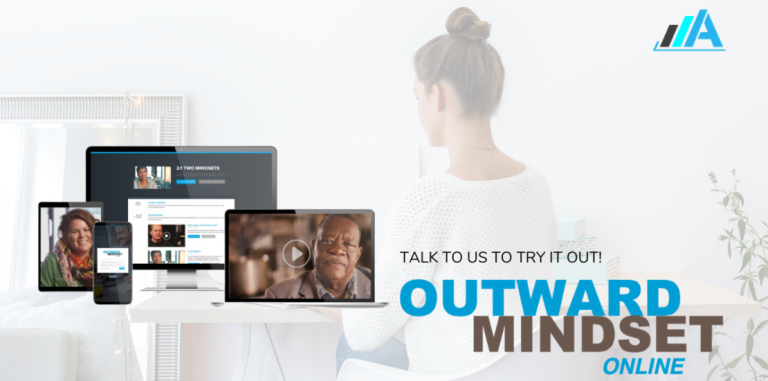
There is a disconnect between employee learning and potential performance. This is clearly seen in a Harvard Business Review survey that found that 70% of employees report that they don’t have mastery of the skills needed to do their jobs
L&D programs are not succeeding in developing the necessary skills for improving on-the-job productivity. This failure is due to a lack of focus on how employees receive, process and apply the information presented during training. This challenge has led L&D leaders to explore the cognitive learning theory and how it can impact their upskilling programs.
According to most cognitive theorists, it is critical to understand the internal thought process of the learners. When learning programs are effective, employees store information in long-term memory and translate it into workplace performance. This is where cognitive learning has take precedent over traditional learning methods.
What is cognitive learning theory?
Cognitive learning is an educational psychology approach that emphasizes how people actively process information to create knowledge and meaning. It is based on the concept of “metacognition,” which means “thinking about one’s thinking”.
Jean Piaget, a well-known educational psychologist and the pioneer of Cognitive Learning Theory (CLT), believed that learning was an active process of creating knowledge within an individual’s mind.
According to Piaget, a learner’s behavior is influenced by their internal cognitive processes, including how they observe, organize, and interpret information. Therefore, it is essential to understand a learner’s learning process. To do so, we must focus not only on their external behavior, but also on their internal behavior.
The cognitive learning theory is broad. It propels an individual to look at L&D from a wider perspective that involves attention, perception, memory, and problem-solving. This approach goes beyond just memorizing new information. It encourages consideration, application, and reflection.
How can the cognitive learning theory impact employee upskilling?
Instead of just focusing on creating training sessions that fail to garner interest, companies are putting more effort into understanding the cognitive capacity of their employees. They are taking proactive steps to understand how employees learn and process information. This has helped in creating learning experiences that drive knowledge retention and boost workplace performance.
In the context of employee upskilling, understanding the cognitive learning theory helps trainers design more immersive learning experiences. It helps them improve workplace performance by understanding the learner’s behavior. Moreover, it motivates learners to link new knowledge with existing ideas to deepen their retention capacity.
4 benefits of cognitive learning theory
Cognitive learning theory is an effective way of upskilling the workforce. It ensures that employees engage fully in the learning process, gain in-depth understanding, and reflect on what they’ve learned. It is an effective way of upskilling the workforce as it helps L&D professionals design training programs that are more likely to be remembered and applied to work by employees.
Below are 4 benefits of implementing cognitive learning theory while upskilling employees:
- Better knowledge acquisition: Provide a hands-on experience that helps learners gain a comprehensive understanding of new topics quickly.
- Ensure continuous learning: Enable employees to build upon previous knowledge by connecting it with new information.
- Boost confidence: The learner becomes more confident when they are equipped with the skills to manage complex situations.
- Enhance employee upskilling: The process of registering, reflecting, and analyzing information helps in improving problem-solving skills.
3 strategies to upskill employees by leveraging cognitive learning theory
Making cognitive learning a part of your upskilling strategy can positively impact overall employee skill development. Thus a shift in strategies can help improve training programs and accelerate the employee’s skill development process. Here are three effective strategies to apply the cognitive learning theory for corporate upskilling.
1) Adopt a learner-centric approach
Learning needs to be both cumulative and personalized. Piaget was an advocate of the learner-centric approach. He believed that existing experiences and knowledge should be used as a basis for acquiring new information.
He suggested the three vital steps for making L&D efforts learner-centric:
- Accommodation: Encourage modifying existing knowledge to accommodate new information.
- Assimilation: Helping employees arrange the knowledge in their heads alongside what they already know.
- Equilibration: Empower learners to strike a balance between what they already know and the knowledge they are currently mastering.
2) Applying bloom’s taxonomy concept to the skill-building process
Psychologist Benjamin Bloom developed a hierarchical framework that has benefitted learning and Development (L&D) professionals. Known as Bloom’s Taxonomy, this framework outlines different levels of cognitive learning. It simplifies the process of acquiring new skills and knowledge. This taxonomy consists of 6 levels, each building on the previous level to promote deeper learning and knowledge transfer:
- Remembering: This is the first level that focuses on remembering the knowledge previously disseminated during the training sessions.
- Understand: In the second, the learners ponder over the information, understand it and construct meaning by summarizing what they’ve learned.
- Apply: In the third level, employees implement the information they’ve learned. It involves practicing the skill in a real-life situation.
- Analyzing: At this level, employees delve deep into the knowledge they’ve remembered, understood, and applied to make associations and discernment. Analyzing here would mean taking complex information and simplifying it with logical reasoning. They have deep knowledge of the information here; they can easily attribute or differentiate facts or data.
- Evaluate: In the fifth level, employees are able to critique a decision. The ability to evaluate a piece of information and provide judgment about the quality or value of the advancement in a specific skill that has been learned.
- Creating: At this last level, the learners become a master of the specific concept. They can create something substantially new using the concept.

3.) Facilitate Self-Discovery and Create Meaningful experiences
Active learner involvement is crucial for any form of cognitive learning to be successful. This is possible by adopting a blended learning approach that merges instructor-led training with self-paced learning.
It enables you to create meaningful learning experiences. Provide initial conceptual knowledge and then foster employee accountability. Enable employees to take ownership of their learning and development. Employees can frequently revisit previously learned material and hop on to relatable information that’s aligned with what they already know. The more an employee discovers, the more they can learn, grow and progress in their role.
How can the right LXP solution drive cognitive learning in your organization?
For cognitive learning to be successful, you need to keep track of the learner’s behavior and requirements. An advanced tool like the Learning Experience Platform(LXP) enables you to accumulate vital data about your learner. Using this insightful information, you can create impactful programs for your employees.

An AI-powered LXP enables you to:
- Apply the cognitive learning theory by understanding the employee’s knowledge gap through self and manager assessments.
- Give your learners a platform where all the past and current courses are streamlined in a consolidated repository. This will help them connect new knowledge with already existing information.
- Easily upskill employees with the LXP’s AI-based recommendations in real-time to fill the knowledge gaps.
- Create scenario-based assessments to fast-pace employee upskilling by giving learners hands-on experience to apply what they’ve learned.
- With all learning analytics on a single platform, monitor and improve employee upskilling programs. Track learners’ behavior and discuss what they think and how they perceive the information.
Check out how an LXP can help you implement the cognitive learning theory to enhance your employee upskilling program.
Original Article: Cognitive Learning Theory – Benefits and Best Practices (disprz.com)
Coreen Menezes, Disprz






